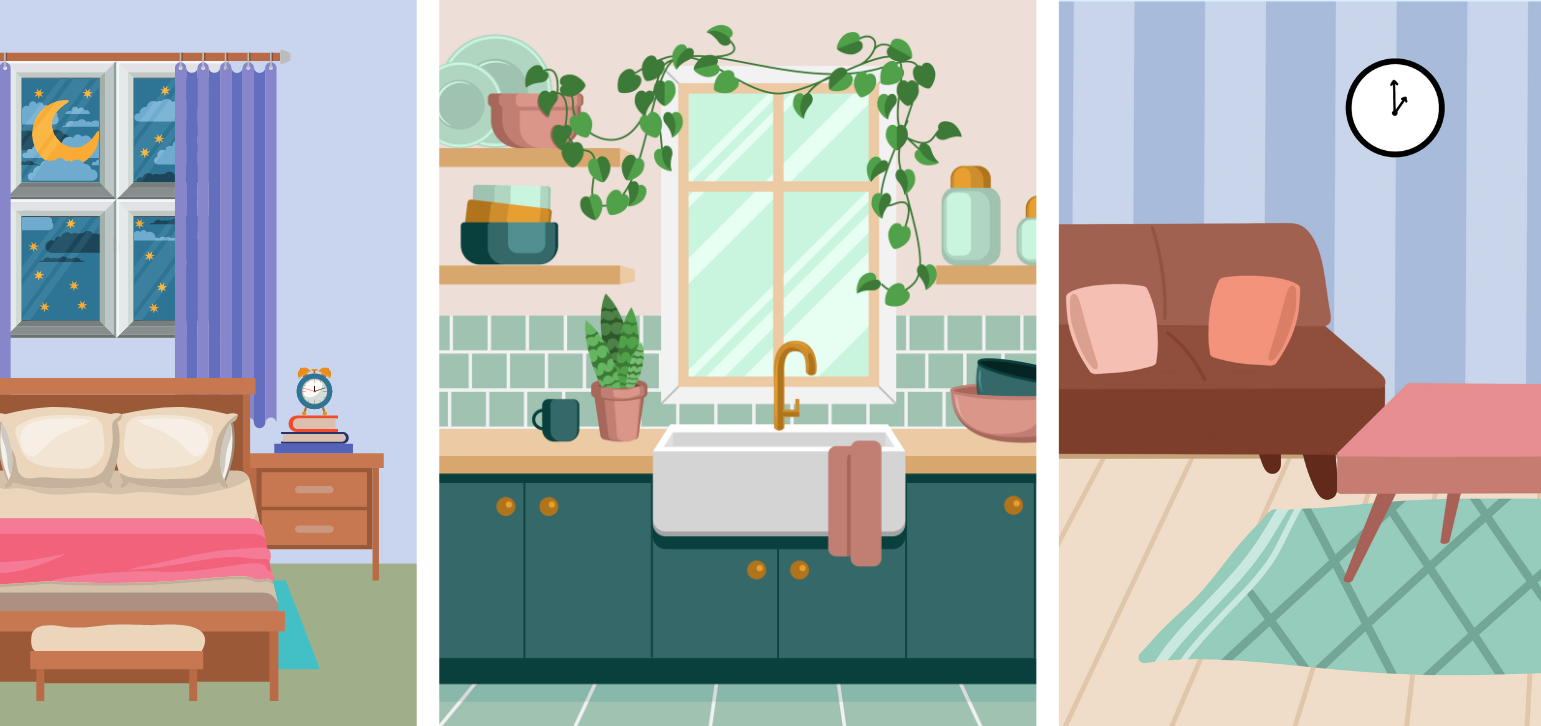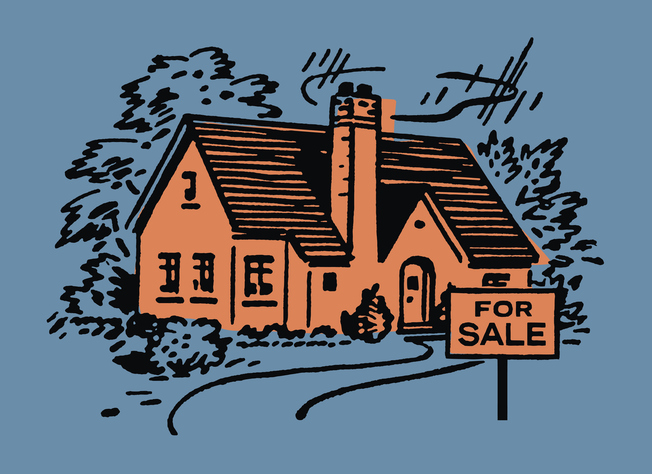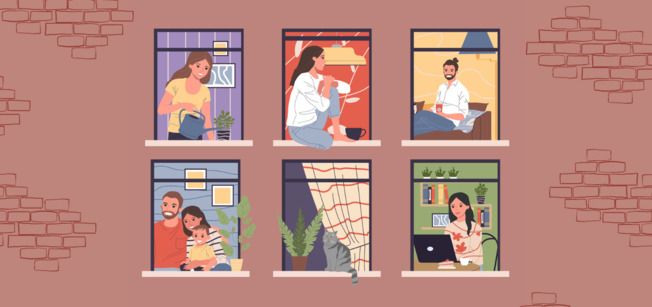
What is a Railroad Apartment? The Definition, Pros, and Cons

By Lilly Milman
Jan 29, 2024
Historic and pre-war buildings all have their quirks, with one of the most unconventional being the advent of the railroad or railroad-style apartment. With a layout more similar to a series of train cars than to a typical apartment, railroad apartments are unique — and not for everyone.
All aboard! In this article, we’re covering everything you need to know about railroad apartments, from how to define them, to their history, to their pros and cons.
What is a railroad-style apartment?
A railroad apartment is a unit where the layout of the rooms is like one long hallway. To get to one room, you must walk through another room — as if you are walking through train cars. Typically, the living room will be the first room you walk into. The next room will be the kitchen, followed by the bedrooms. The bathrooms will likely be located off of the bedrooms. So, all rooms are directly connected to each other without any hallway space in between.
What is the history behind railroad apartments?
Railroad apartments made their way into New York City for the first time during the 19th century following the Industrial Revolution. They presented a solution to the urban overcrowding happening in the city at the time and thus began appearing in tenement buildings and subdivided brownstones. While the railroad layout allowed for more apartments in a smaller amount of space, they did come with their downsides. Primarily, because there were many building regulations at the time, many railroad apartments lack privacy and light — especially in the middle rooms of the apartment, which often have no windows. These downsides are still seen in the renovated railroad apartments of today.
While New York City is where railroad apartments got their start, they soon started cropping up in other major cities like Boston, San Francisco, and New Orleans, where the term “shotgun apartment” is used interchangeably with railroad apartment.
What’s the difference between a railroad apartment and a floor-through apartment?
Many real estate listings may use the terms “railroad apartment,” “shotgun apartment,” and “floor-through apartment” interchangeably, but there are actually slight differences between these types of apartments. Railroad apartments and shotgun apartments are long and narrow by design, extending from the front of a building to the back. That means that there can be more than one of these kinds of apartments on a floor of a building. A floor-through apartment, however, takes up the entire floor of a building. The rooms of a floor-through apartment also aren’t necessarily connected to each other without hallways like in a railroad apartment.
What’s the difference between a railroad apartment and a studio apartment?
While neither a studio nor a railroad apartment have hallways, there are major differences. A studio apartment has a layout that is just one large room, with a kitchenette against one wall. The only room separated by a door in a studio apartment is the bathroom. Meanwhile, in a railroad apartment, you will see multiple rooms separated by doors, including a separate kitchen. Some railroad apartments will even have up to three separate bedrooms. They are typically much larger than studio apartments.
Characteristics of a Railroad Apartment
If you’re wondering whether a unit is considered a railroad apartment, check for the following characteristics:
- Rooms connected to each other with no hallways in between. You will have to walk through one room to get to another, like you are walking through train cars.
- Pre-war architecture. Because railroad apartments are an older style of layout, you’ll often find historic features like original crown moldings or hardwood floors. You’ll find railroad apartments in old buildings, like former tenements or brownstones.
- Long and narrow layouts. Most likely, a railroad apartment will have very narrow rooms, with a width of 12 feet or less. The apartment will be longer than it is wide — since it extends from the front of an apartment building to the back.
Pros and Cons of Railroad Apartments
Like any living space, railroad units come with their own set of pros and cons. When determining whether or not you’d like to live in a railroad apartment, consider the following factors.
Pros
- Affordability. The unconventional layout of railroad apartments often leads to them being priced lower than more traditional units. If you don’t mind the layout, then you can get much more bang for your buck in a railroad apartment than in a smaller unit with a different layout.
- Space. Railroad apartments frequently offer more square footage than other apartment layouts. In a market known for small bedrooms like New York City, you’ll likely find the largest bedrooms for the lowest cost in railroad-style units. You may even have a separate dining room — a luxury in NYC!
- Historic architectural features. If new construction isn’t your cup of tea, then you’ll enjoy the historic features often found in older railroad-style apartments. Think: high ceilings, crown molding, hardwood floors, pocket doors, and fireplaces.
Cons
- Lack of privacy. The most common complaint that comes with railroad apartments is their lack of privacy. Because you will need to walk through at least one bedroom to get to the next, they are more ideal for couples rather than roommates or families.
- Easily cluttered. If you are someone who has trouble keeping their space clean, a railroad apartment may present some challenges for you. The narrow rooms can lead to clutter quickly and are therefore more ideal for minimalists or those confident in their interior design skills.
- Less amenities. Any apartment located in an older building will lack many modern touches, like elevators or central air conditioning. If a railroad apartment is in a walkup building, then it may not be a great fit for someone with mobility issues. Plus, the rooms in the middle of the apartment will have a lack of natural light.
The Bottom Line
Railroad apartments are a unique and historic feature of urban areas, especially in the Northeast. While most have been updated and are much more livable now than they were in the late 19th and early 20th centuries when they were built, they still present some downsides to the modern renter, like a lack of amenities or an awkward floorplan. However, what they lack in amenities they typically make up in square feet. When deciding whether you’d like to rent a railroad apartment, consider whether you’d like to trade off these downsides for the opportunity to rent a larger apartment for a cheaper price.
Top cities
Atlanta Apartments
1,999 apartments starting at $600/month
Austin Apartments
4,949 apartments starting at $600/month
Baltimore Apartments
1,472 apartments starting at $500/month
Boston Apartments
3,499 apartments starting at $940/month
Charlotte Apartments
2,903 apartments starting at $450/month
Chicago Apartments
4,012 apartments starting at $450/month
Dallas Apartments
5,609 apartments starting at $604/month
Fort Worth Apartments
2,193 apartments starting at $600/month
Houston Apartments
4,504 apartments starting at $590/month
Las Vegas Apartments
1,081 apartments starting at $704/month
Los Angeles Apartments
11,535 apartments starting at $625/month
Miami Apartments
544 apartments starting at $1,000/month
Milwaukee Apartments
928 apartments starting at $465/month
New York Apartments
4,118 apartments starting at $488/month
Oakland Apartments
608 apartments starting at $885/month
Orlando Apartments
842 apartments starting at $825/month
Philadelphia Apartments
3,657 apartments starting at $550/month
Phoenix Apartments
4,153 apartments starting at $599/month
Pittsburgh Apartments
1,223 apartments starting at $600/month
Portland Apartments
2,519 apartments starting at $599/month
Raleigh Apartments
1,367 apartments starting at $750/month
San Antonio Apartments
3,925 apartments starting at $525/month
San Diego Apartments
2,960 apartments starting at $650/month
San Francisco Apartments
436 apartments starting at $675/month
San Jose Apartments
405 apartments starting at $1,300/month
Seattle Apartments
3,623 apartments starting at $450/month
Tampa Apartments
1,078 apartments starting at $800/month
Washington DC Apartments
2,878 apartments starting at $745/month


